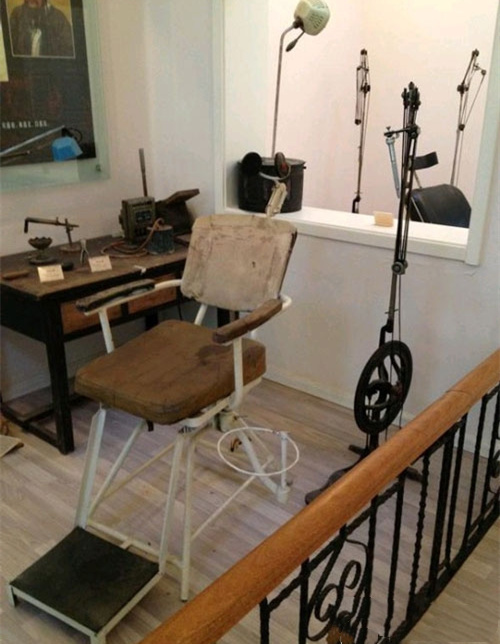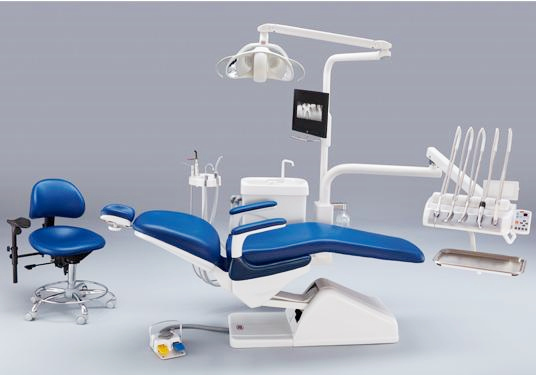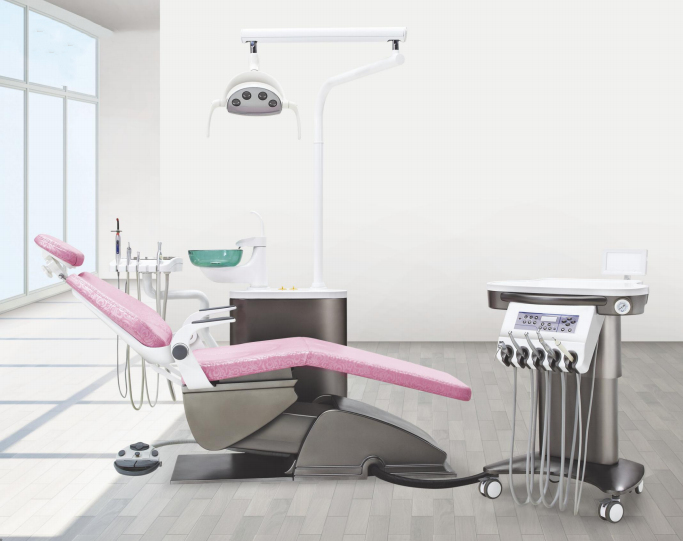A good tool for patients to see their teeth — dental chair
The dental chair is used for the examination and treatment of oral surgery and oral diseases. The comprehensive dental treatment chair is necessary medical equipment for dentists. Since the advent of the first automatic dental drill in 1887, the dental treatment machine has been greatly improved in terms of performance and intelligence.
The primary function of the dental chair is to place the patient in a convenient position for treatment, and the physician should be able to gain access to the oral cavity without being forced to remain in an inconvenient position for extended periods of time. Dentists’ instruments are constantly improved and updated with the development of the modern industry.
Let’s review the historical process of the dental chair together:
In 1840, the Frenchman Brave Steyer made the first rubber tooth shaping device in Paris. Then came the tooth extraction forceps.
By the 19th century, not only did extraction forceps improve, but other dental machines were invented one after another.
In 1838, the handle-type dental drill was invented;
The soft rope was invented in 1888;
From 1870 to 1876, the dental drill that was rotated by the foot was invented;
The electric dental drill was invented in 1891;
The first dental armchair with a headrest appeared in 1848;
In 1850, the hydraulic armchair for dentistry was introduced, which raised the seat with the help of a hydraulic jack, making it easier for doctors to operate. Later, after further improvement, the armchair can be tilted at various angles with the help of a hydraulic pump.
In 1886, Whitcomb improved the spittoon for dental use, making it possible to have a spittoon with a continuous flow of water.
In 1881, after Johnston’s improvement, a valve and a saliva pump were added, which were more convenient and hygienic to use.
After 1929, most of the orthoses used for tooth shaping were made of stainless steel.

A modern dental chair in the 21st century
Patient comfort requirements for dental chairs feature:
- The narrow, thin back allows the clinician to move closer to the patient without bending over.
- Adjustable headrest to support the patient’s head and neck in a comfortable position. It should not extend under the chair’s back and touch the doctor’s leg or knee.
- There is enough backward tilt range to treat patients in a vertical or horizontal position. If necessary, the head can be lowered below the chest to treat syncope.
- The armrest should accommodate and support the elbows and upper arms of adult to juvenile patients. Handles and forearm support should be of convenient size and placement, and armrests should not restrict physician access or force legs too far apart.
- Give the patient full-body support with comfortable padding and lumbar support, with no points that might pinch the limb.
- Reliable mechanical construction has the ability to react and move smoothly when lifting large-dimension patients.
Now, the newly launched electric portable dental treatment unit is available now. A dentist can use the adjustable RPM to choose the suitable rotation speed for targeted dentistry treatment. The portable dental unit is powered by electricity, and the power is continuous and stable.



